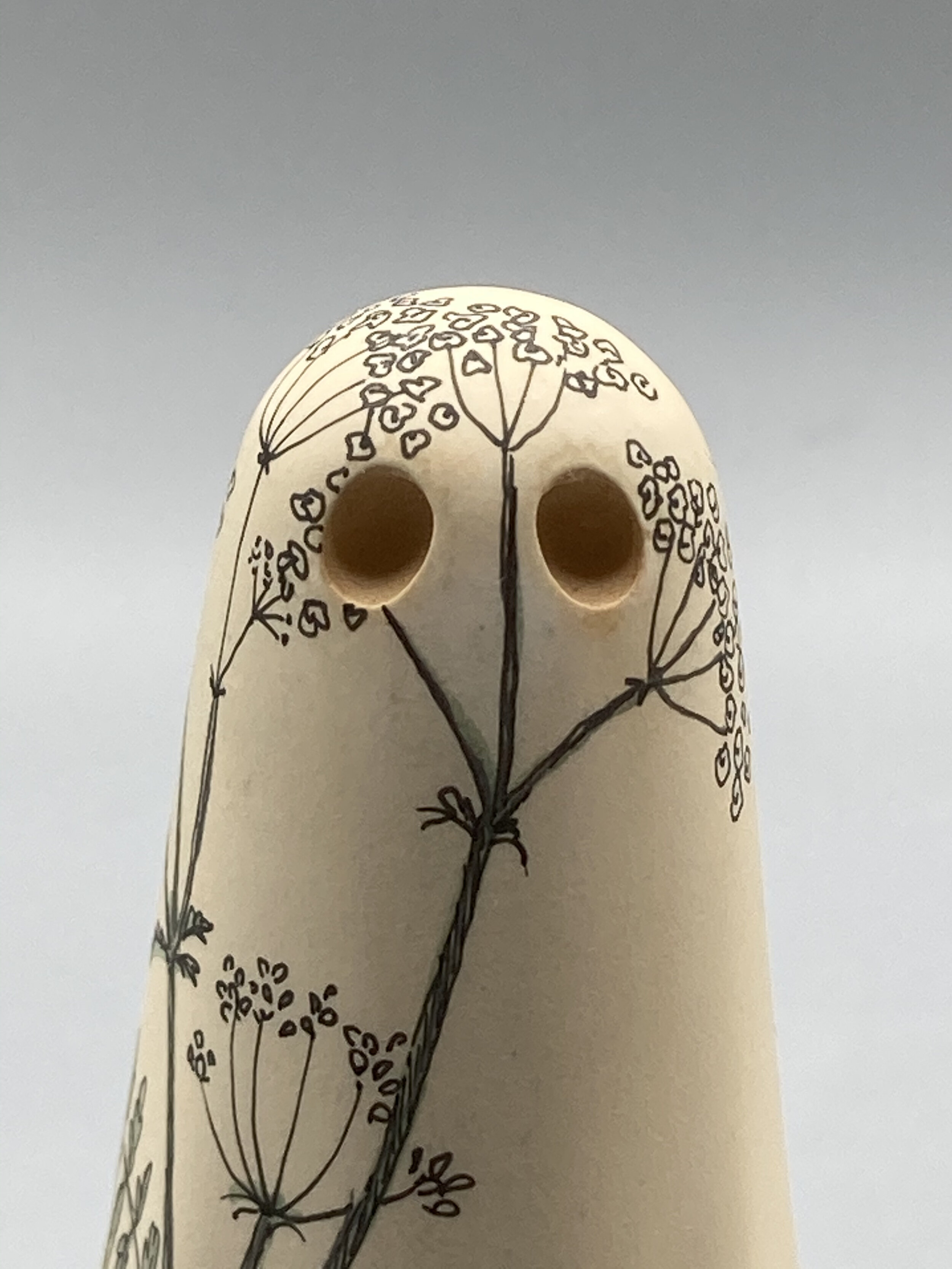


Poison Garden Ghost
The Poison Garden ghost collection is our 11th Black Box Edition Ghost. Black Box editions are Ghosts which are made in collaboration with a maker, artisan or crafts person to produce a limited numbered edition. Black Box Ghosts are generally ( but not always ) made from a different material to our everyday Ghosts. Their limited status has already led to them becoming highly sought after and much coveted Ghosts and prized amongst collectors. Poison Garden Ghosts are all hand illustrated with pen & ink by Ghost Merchant Mrs Sophie Humphreys. There are five different poisonous plants with 14 of each making the edition. Each illustrated Ghost is markedly different to the next and signed and dated on the base. They are supplied in the black and gold embossed box with the numbered edition card.
The Celts called York ‘Eborakon’ - ‘the place of the Yew Trees’. From root to needle, Yew is fatally poisonous, yet Taxol, a chemotherapy drug derived from it’s bark, has saved many lives. For centuries, keepers of gardens have known that many plants have the capacity to kill and cure – have a look around even the most benevolent cottage garden and you will find herbs with vices and virtues... Foxglove slows the heart, common Spurge blisters the skin, Autumn Crocuses can make you fatally sick....
Baneful plants have their place in every apothecary garden, from the famous fifteenth-century Medici family garden in Florence, to Alnwick’s poison garden in Northumbria. They would have featured in botanist John Gerard’s large herbal garden in London, where he grew "all manner of strange trees, herbes, rootes, plants, flowers and other such rare things". From his garden he would write his 1,484 page illustrated Herball, or Generall Historie of Plantes, published 1597, the most prevalent English botanical herbal of the seventeenth and eighteenth century – it’s still in print today. Plant hunters like Gerard catalogued their discoveries in botanical illustration echoed in these hand-illustrated ghosts. Much like these plants, however, beware of deceit – the Herball is full of mistakes, myths and untruths, and Gerard may have even plagiarised the whole book....
“Among the manifold creatures of God that have all in all ages dutifully entertained many excellent wits, and drawn them to the contemplation of the divine wisdome, none have provoked mens studies more, or satisfied their desires so much as plants have done … for if delight may provoke mens labor, what greater delight is there than to behold the earth apparelled with plants, as with a robe of embroidered worke...”
- John Gerard’s Herball, or, Generall historie of plantes, 1597
Poison plants are often both delightful and deadly. In the Victorian era, children would create ‘killing jars’ to kill insects without damaging them – filling jars with the beautiful thick green leaves of the Cherry Laurel, which when crushed releases hydrogen cyanide. Victorian ladies of the leisure class would catch drops of nectar from the large hanging flowers of Brugmansia, commonly known as Angel’s Trumpet, in their cups of tea, to induce hallucinogenic effects – carefully, as too much could kill. These ghosts, too, are both beautiful and dark, with the capacity to delight and bewitch.
Edition of 70 / 14 per plant
